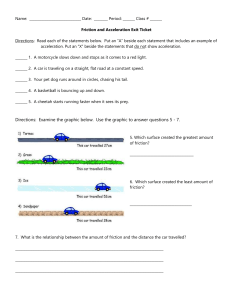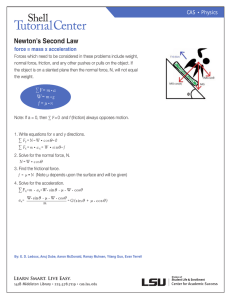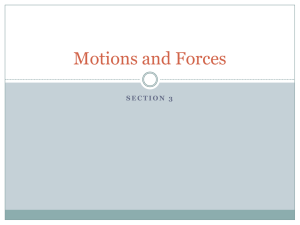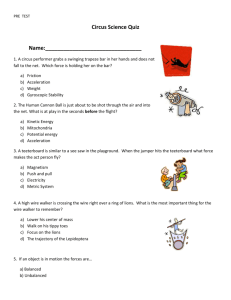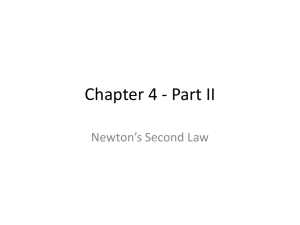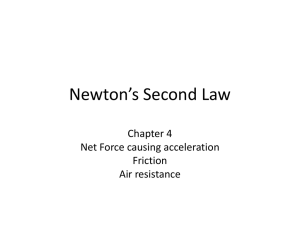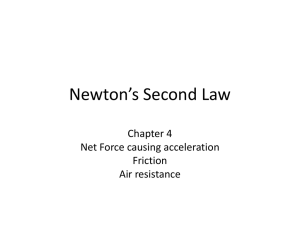Phy 121 - Assignment 4
advertisement
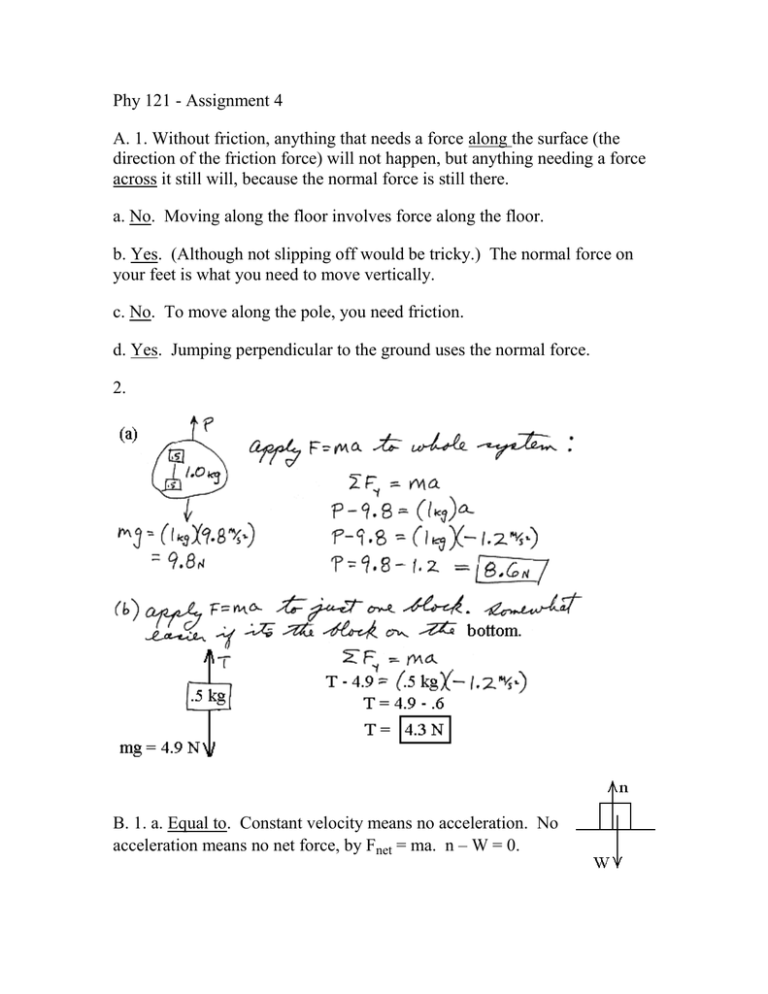
Phy 121 - Assignment 4 A. 1. Without friction, anything that needs a force along the surface (the direction of the friction force) will not happen, but anything needing a force across it still will, because the normal force is still there. a. No. Moving along the floor involves force along the floor. b. Yes. (Although not slipping off would be tricky.) The normal force on your feet is what you need to move vertically. c. No. To move along the pole, you need friction. d. Yes. Jumping perpendicular to the ground uses the normal force. 2. B. 1. a. Equal to. Constant velocity means no acceleration. No acceleration means no net force, by Fnet = ma. n – W = 0. b. More than. To have an upward acceleration, you need an upward net force, by Fnet = ma. n – W > 0. 2. a. Given: vf = 0, vi = 9.10 m/s, t = 5.00 s Find: a a= = = = – 1.82 m/s2 (Throw away the minus because the question asks for magnitude. Magnitude is to a vector what absolute value is to a scalar.) b. W = mg m= = = 1265 kg ΣFx = ma – f = (1265)( – 1.82) f = 2303 N ≈ 2.30 kN (Converting to kN is convenient for rounding to 3 significant figures, but not actually necessary.) C. 1. No. The friction force on tires sliding across pavement is μkn. If they don’t slide, it’s static friction, which can be as large as μsn. Since μs > μk, dragging the wheels does not give the shortest possible stop. (This is part of the idea behind antilock brakes.) 2. D. E. a. A constant speed means the acceleration is zero. If you put zero acceleration into Newton’s second law, you get
